In today’s fast-paced digital landscape, content curation has become essential for brands aiming to stand out. With an overwhelming amount of information available, a well-crafted content curation strategy helps businesses sift through the noise and deliver valuable insights to their audience. It’s not just about sharing; it’s about sharing smartly.
A successful content curation strategy not only enhances engagement but also establishes authority in a niche. By thoughtfully selecting and presenting relevant content, brands can foster trust and build a loyal following. This article delves into the key elements of an effective content curation strategy, providing actionable tips to elevate online presence and connect with target audiences more meaningfully.
Table of Contents
ToggleUnderstanding Content Curation Strategy
Content curation involves the process of discovering, gathering, and presenting relevant information to a specific audience. A well-thought-out strategy enhances content effectiveness and audience engagement.
Definition of Content Curation
Content curation refers to the selection and organization of digital content that aligns with a brand’s goals and target audience needs. This process includes identifying valuable resources, filtering out irrelevant information, and sharing insights across various platforms. By utilizing tools and techniques for curation, brands can present a coherent narrative while providing their audience with diverse viewpoints and relevant updates.
Importance in Digital Marketing
Content curation plays a crucial role in digital marketing. It positions brands as thought leaders by sharing industry knowledge and trends. This strategy fosters trust and credibility, allowing brands to build stronger connections with their audience.
Effective curation can improve search engine optimization (SEO) by increasing website traffic and enhancing visibility. By consistently providing high-quality, curated content, brands can engage followers and encourage social sharing, leading to higher audience retention and amplifying brand reach.
Key Elements of a Successful Strategy

A successful content curation strategy hinges on understanding the audience and selecting pertinent resources. The following elements are crucial for effective implementation.
Identifying Target Audience
Identifying the target audience forms the foundation of content curation. Brands must analyze demographics, interests, and online behaviors to tailor content effectively. Tools like Google Analytics offer insights into user preferences, ensuring curation aligns with audience expectations. Engaging with the audience through surveys or social media polls enhances understanding and allows for adjustments in strategy based on feedback. Ultimately, a well-defined audience facilitates the selection of relevant content, improving engagement and retention.
Selecting Relevant Content Sources
Selecting relevant content sources ensures the curation process remains credible and valuable. Brands should rely on authoritative industry publications, reputable websites, and subject matter experts. Regularly assessing the quality of these sources is essential to maintain accuracy and relevance. Utilizing RSS feeds, content aggregators, and social media monitoring tools can streamline the discovery process. Establishing partnerships with influencers or thought leaders in the industry can further elevate the quality of curated content. Consistent evaluation and updating of sources help maintain engagement and authority within the brand’s niche.
Tools and Platforms for Content Curation
Various tools and platforms facilitate effective content curation. They streamline processes, making it easier to gather, organize, and share relevant content.
Popular Tools
- Feedly: Feedly aggregates content from multiple sources, allowing users to follow industry-specific blogs, websites, and news outlets, ensuring access to fresh and relevant information.
- Pocket: Pocket enables users to save articles, videos, and web pages for later consumption, fostering easy organization and access to curated content.
- Curata: Curata employs machine learning to discover and recommend content based on user preferences, optimizing the content curation process by offering highly relevant suggestions.
- Flipboard: Flipboard transforms content into visually appealing digital magazines. It allows users to collect articles, videos, and blogs tailored to specific interests.
- Scoop.it: Scoop.it allows users to curate customized content on specific topics and share it with audiences through visually engaging online presentations.
- Pinterest: Pinterest serves as a visual discovery tool, letting users create boards that curate images, articles, and videos, which can inspire and inform audiences.
Features to Look For
- User-Friendly Interface: Select tools with intuitive designs that allow for easy navigation and efficient content management.
- Integration Capabilities: Opt for platforms that integrate smoothly with existing tools and social media, enhancing the overall workflow.
- Content Recommendations: Choose tools that offer algorithm-driven content suggestions based on user behavior, increasing relevance and engagement.
- Analytics Tracking: Incorporate tools with built-in analytics for monitoring content performance, allowing for informed adjustments to the curation strategy.
- Customization Options: Look for platforms that allow personalized branding and modification of curated content to align with unique brand identity.
- Collaboration Features: Ensure tools support team collaboration, facilitating shared access and input from multiple contributors in the content curation process.
Best Practices for Implementation
Implementing an effective content curation strategy involves systematic planning and ongoing engagement. These practices optimize the curation process, ensuring maximum impact and connection with the audience.
Creating a Content Calendar
Creating a content calendar streamlines the curation process. It provides a clear overview of scheduled content shares, themes, and platforms.
- Identify key dates relevant to the industry, such as product launches or events.
- Schedule posts consistently, ensuring regular engagement with the audience.
- Analyze past performance to adjust timing and frequency for optimal results.
- Integrate content from diverse sources to maintain variety and relevance.
- Utilize content calendar tools, such as Trello or Asana, for organization and collaboration.
Engaging with Your Audience
Engaging with the audience boosts interaction and loyalty. Understand audience preferences through active communication.
- Respond promptly to comments and messages across platforms.
- Conduct polls to gather feedback and insights on content interests.
- Encourage user-generated content by prompting followers to share their experiences.
- Share curated content tailored to user interests, enhancing personalization.
- Monitor engagement metrics to refine strategies based on audience behavior.
These best practices facilitate the effective implementation of a content curation strategy, enhancing audience engagement and establishing brand authority.
A robust content curation strategy is essential for brands seeking to thrive in a crowded digital landscape. By effectively selecting and presenting relevant information, brands can not only engage their audience but also establish themselves as trusted authorities in their fields. The right tools and practices pave the way for streamlined curation and foster meaningful connections with target audiences.
As brands embrace content curation, they’ll find that it enhances their visibility and strengthens their online presence. Ultimately, a well-implemented strategy leads to increased audience retention and a broader reach, setting the stage for long-term success in digital marketing.








